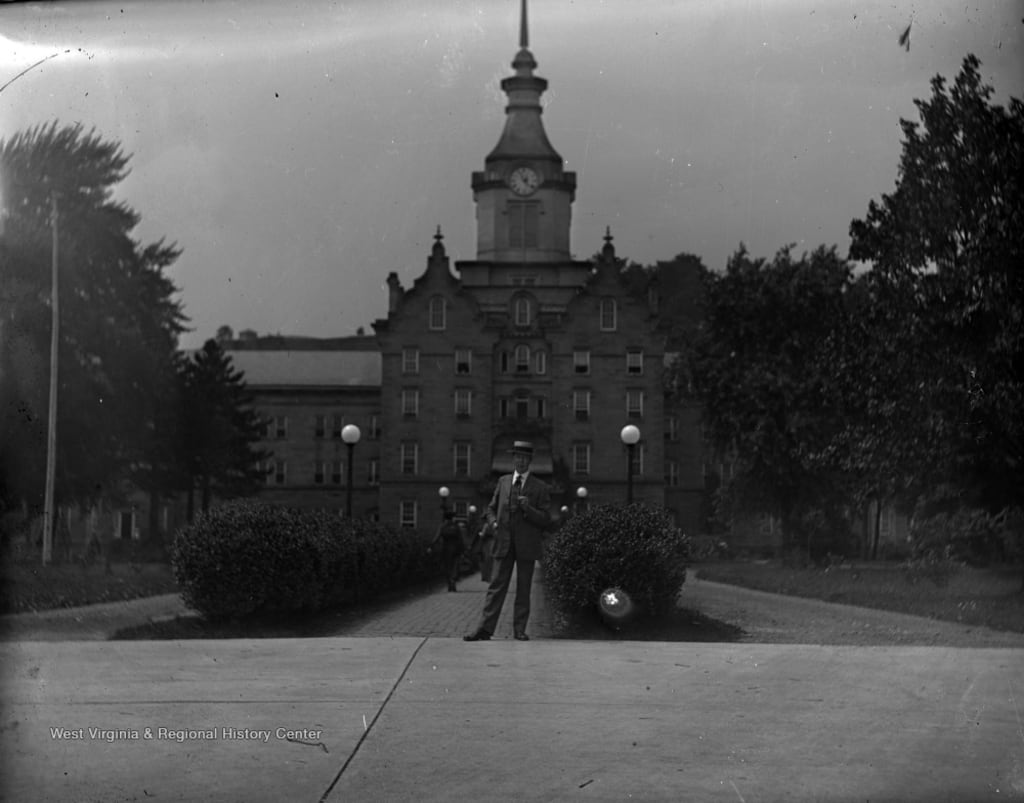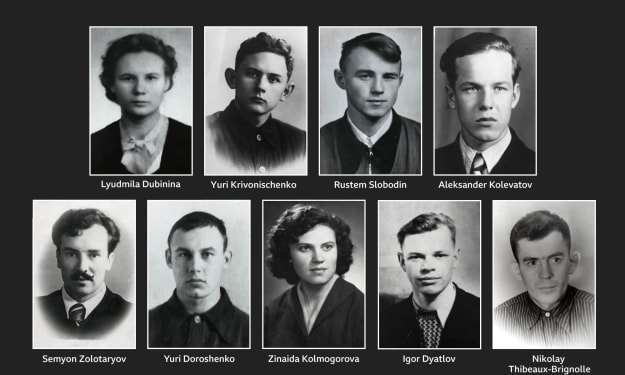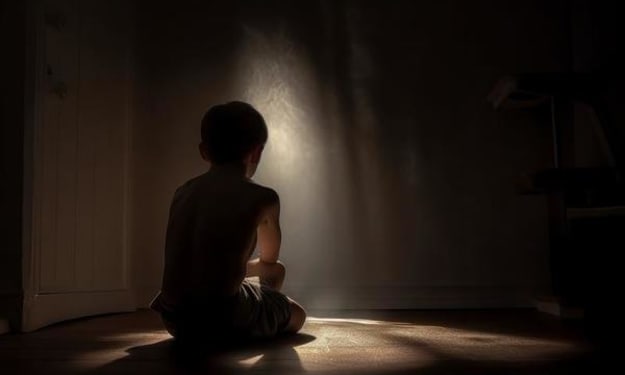Whispers in the Dark: Exploring the Haunting History of the Trans-Allegheny Lunatic Asylum
Unearthing the Haunting Secrets of the Trans-Allegheny Lunatic Asylum - Where History Meets the Supernatural.

Nestled among the picturesque hills of West Virginia, the Trans-Allegheny Lunatic Asylum stands as a haunting reminder of a bygone era in mental healthcare. Built in the mid-19th century, this massive Gothic Revival structure was once intended to provide care and treatment to those suffering from mental illness. However, over the years, it gained notoriety for its overcrowding, inhume conditions, and a dark history filled with stories of suffering and death. Today, it's renowned not only for its historical significance but also for the eerie tales of paranormal activity that surround it.
A Beacon of Hope Turned Nightmare
In the mid-19th century, the Trans-Allegheny Lunatic Asylum originally known as the "Weston State Hospital," emerged as a symbol of progress in the treatment of mental illness. Designed according to the Kirkbride Plan, an innovative approach to psychiatric care at the time, the institution was conceived with the noble intention of providing humane and moral treatment to those suffering from mental disorders.
However, what began as a hopeful endeavor swiftly descended into a harrowing nightmare. The Kirkbride Plan, which advocated for spacious, well-ventilated builtings surrounded by idyllic landscapes, aimed to foster a therapeutic environment. The asylum's initial design, with its picturesque setting along the tranquil waters of the West Fork River, seemed to hold promise.
As the first patients were admitted in 1864, there was genuine optimism that the Weston State Hospital would pioneer a new era in mental healthcare. Unfortunately, this optimism was short-lived, and the institution would soon become synonymous with overcrowding, inhumane conditions, and a troubling history of abuse and neglect.
The hospital, designed to accommodate around 250 patients, quickly became a cramped a overcrowded space. The population swelled to several times its intended capacity, with over 2,400 patients at its peak in the 1950s. This overcrowding led to a multitude of issues, including a lack of proper care, inadequate sanitation, and severe understaffing. Patients were left to languish in overcrowded dormitories, their cries for help often unheard or ignored.
From Treatment to Torture
In early years of the asylum, treatments for mental illness were often experimental and, by today's standards, barbaric. Patients endured treatments such as hydrotherapy, lobotomies, and electroconvusive therapy, which were administered without consent and with little understanding of their effects.
The situation worsened as the hospital's population swelled beyond its limits. With too many patients to care for adequately, staff members struggled to maintain even basic hygiene and sanitation. Reports of abuse and neglect became alarmingly common. Patients were often shackled, isolated, and subjected to deplorable living conditions.
A Grim Legacy
The Weston State Hospital's dark legacy extends beyond overcrowding and cruel treatments. It also played a sinister role in the eugenics movement of the early 20th century. This movement advocated for the sterilization of individuals deemed "unfit" to reproduce, and the hospital became site for the forced sterilization of patients, a practice that is now widely condemned as a violation of human rights.
As the 20th century progressed, advances in psychiatric care and changes in societal attitudes toward mental illness led to the gradual closure of institutions like Weston State Hospital. In 1994, it ceased its function as a mental healthcare facility, marking the end of an era defined by suffering and neglect.
The Tragic Inhabitants
Behind the foreboding walls of the Trans-Allegheny Lunatic Asylum lie the tragic stories of countless individuals who once called it home. These stories serve as a haunting testament to the institution's dark past and the suffering endured by those within its confines.
1. The Forgotten Children
One off the most heart-wrenching aspects of the asylum's history is the presence of children among its residents. These were not adults, but innocent young children who found themselves trapped in an environment that was ill-suited to their needs. Many of these children were abandoned by their families due to mental health issues that were poorly understood at the time.
These young souls, some as young as five years old, were subjected to the same deplorable conditions and treatments as adults patients. They lived in dormitories alongside older, mentally ill patients, enduring a life of uncertainty and fear. The lack of proper education and emotional support further isolated them from any hope of a normal childhood.
2. The Inmates' Plight
Beyond the tragedy of the children, the stories of adult patients are equally distressing. Many of them were committed to the asylum not because they were truly mentally ill but because they were deemed "inconvenient" to society or their families. Some suffered from conditions that today would be diagnosed and treated differently, such as depression, post-traumatic stress disorder, or even conditions as mild as social anxiety.
Inside the asylum, these individuals faced a bleak and often terrifiying existence. The overcrowded conditions meant that they had little privacy or personal space. Reports of mistreatment and abuse were rampant, and the harsh treatments they endured often exacerbated their conditions rather than alleviating them.
3. The Harsh Reality
Life within the asylum was marked by stark routines and a lack of therapeutic activities. Patients were often confided to their dormitories or common areas for most of the day, with little opportunity for recreatuon or meaningful engagement. The lack of proper mental health care meant that many patients deteriorated over time, their suffering intensified by the conditions they endured.
The stories of individual patients, though largely forgotten by history, serve as a poignant reminder of the need for compassionate and evidence-based mental healthcare. Their experiences are a grime testament to the failures of the asylum system in the 19th and 20th centuries.
Echoes of the Past - The Paranormal Phenomena
As the Trans-Allegheny Lunatic Asylum's dark history became widely known, it began to draw a different kind of attention - that of paranormal enthusiasts, ghost hunters, and thrill-seekers. The asylum's imposing architecture and its grim past create an atmosphere ripe for eerie experiences and encounters with the unknown. Here, we delve into the spectral tales and chilling phenomena that have turned the asylum into a magnet for the supernatural.
1. Lily and Her Playful Laughter
One of the most famous spirits said to haunt the Trans-Allegheny Lunatic Asylum is that of a young girl named Lily. She is believed to have spent her formative years within the asylum's walls, a tragic reminder of the children who suffered alongside adult patients. Visitors have reported hearing the unmistakable sound of a child's laughter echoing through the hallways, accompanied by the faint bouncing of a ball. These playful, ghostly encounters have left many both fascinated and unnerved.
2. The Restless Souls of Former Staff and Patients
Beyond the spectral laughter of Lily, there are countless accounts of encounters with former staff members and patients who seem unable, or unwilling, to move on. Some have reported seeing shadowy figures lurking in the corners of dimly lit rooms, while others claim to have heard disembodied voices whispering unintelligible messages. These restless souls appear to linger within the asylum, their presence leaving an indelible mark on the building's haunted reputation.
3. Unexplained Cold Spots and Eerie Sensations
Visitors exploring the asylum have reported an array of paranormal experiences, including sudden drops in temperature and unexplained cold spots. Some have felt an overwhelming sense of unease and dread as they navigate the echoing corridors. These inexplicable phenomena have led many to believe that there are supernatural forces at play within the asylum's walls.
4. Nighttime Ghost Tours and Paranormal Investigations
For those seeking a spine-tingling experience, the Trans-Allegheny Lunatic Asylum offers nighttime ghost tours and paranormal investigations. These guided excursions take visitors deep into the heart of the asylum's haunted history, providing an opportunity to explore its darkened hallways, abandoned treatment rooms, and infamous "paranormal hotspots." Many participants have reported encounters with the unknown during these tours, adding to the mystique of the asylum.
5. The Debate: Skepticism vs. Belief
The asylum's reputation as a paranormal hotspot has sparked a spirited debate between skeptics and true believers. While some dismiss the reported experiences as mere tricks of the mind, others insist that the sheer volume of accounts and the consistency of the stories point to something unexplained residing within the buildings storied walls.
The Enigmatic Investigations
The compelling lure of the Trans-Allegheny Lunatic Asylum's paranormal activity has led to extensive investigations by both amateur and professional ghost hunters, as well as paranormal research teams. This section delves into the various investigations that have taken place within the asylum's eerie confines, shedding light on the methods used to uncover the mysteries lurking within.
1. Ghost-Hunting Equipment and Techniques
Ghost hunters armed with an array of specialized equipment have descended upon the Trans-Allegheny Lunatic Asylum in search of supernatural phenomena. These investigations often involve tools such as electromagnetic field (EMF) meters, digital voice recorders, infrared cameras, and spirit communication devices like Ouija boards and EVP (Electronic Voice Phenomena) recorders. These tools are employed to detect anomalies in the environment, capture audio or visual evidence, and communicate with potential spirits.
2. Night-Vision Adventures
Many paranormal investigators conduct their research during nighttime hours, capitalizing on the eerie ambiance and increased chances of encountering ghostly activity. The asylum's dimly lit hallways and abandoned treatment rooms provide an idea backdrop for their pursuits. Armed with night-vision cameras, investigators navigate the darkness, hoping to document unexplained phenomena.
3. Evidence of the Unexplained
Over the years, numerous paranormal investigations at the Trans-Allegheny Lunatic Asylum have yielded intriguing evidence. This includes photographs and videos puportedly capturing apparitions, strange light anomalies, and unexplained shadows. EVP recordings have also captured mysterious voices and whispers that defy convectional explanations. These findings serve as tantalizing hints at the supernatural presence believed to inhabit the asylum.
4. Personal Encounters and Testimonials
In addition to the technical evidence, many investigators and visitors to the asylum have shared their personal encounters with the unknown. These testimonials often recount experiences such as hearing disembodied voices, witnessing objects moving on their own, and feeling sudden drops in temperature. Such firsthand accounts contribute to the ongoing intrigue surrounding the asylum.
5. Skepticism and Debunking
Despite the plethora of evidence and personal testimonials, skeptics remain critical of paranormal investigations. They argue that many phenomena can be attributed to natural explanations, such as drafts causing cold spots or audio pareidolia, where the human brain interprets random noise as meaningful speech. Skeptics emphasize the importance of critical thinking and scientific rigor in assessing paranormal claims.
6. The Unresolved Mysteries
The Trans-Allegheny Lunatic Asylum continues to be a site of fascination and debate within the paranormal community. While investigations have produced compelling evidence, the ultimate nature of the unexplained phenomena remains an open question. Some believe that the asylum's troubled history and the suffering endured within its walls have left an indelible imprint on the building, while others attribute the experiences to psychosocial factors.
A Legacy of Shadows and Light
The Trans-Allegheny Lunatic Asylum, with its imposing architecture and grim history, occupies an unique place in the annals of the paranormal. Its journey from an idealistic vision of humane mental healthcare to a nightmarish realm of overcrowding, neglect, and cruelty is a haunting testament to the failures of a bygone era.
The asylum's tragic past, with its forgotten children, suffering patients, and unsettling treatments, lingers like a ghostly echo within its decaying walls. The very air seems heavy with the weight of sorrow, a reminder of the countless souls who endured their afflictions in silence.
Yet, the asylum's history did not end with its closure. It underwent a transformation into a site of spectral intrigue, attracting those seeking answers to the mysteries that persist within. Ghostly laughter, shadowy figures, and inexplicable phenomena have become part of the asylum's chilling narrative, drawing vistitors from around the world.
Paranormal investigations, fueled by a combination of skepticism and belief, have added layers of complexity to the asylum's enigmatic story. The evidence collected, whether through sophisticated equipment or personal encounters, continues to tantalize but rarely offers conclusive proof.
The Trans-Allegheny Lunatic Asylum stands as a place where history and the supernatural intersect, a liminal space where the past refuses to be forgotten, and the unknown beckons with tantalizing ambiguity. It challenges us to explore the boundaries of our understanding and contemplate the enduring mysteries that dwell within the human psyche.
Whether you approach the asylum as a historian, a skeptic, a believer, or simply as an intrigued visitor, one thing remains certain - its story is not confined to the pages of history books or ghostly encounters. It serves as a stark reminder of the importance of compassionate and evidence-based mental healthcare, and as a testament to the enduring power of the human spirit, even in the face of the darkest shadows.
About the Creator
Enjoyed the story? Support the Creator.
Subscribe for free to receive all their stories in your feed. You could also pledge your support or give them a one-off tip, letting them know you appreciate their work.





Comments
Shelby Arnold is not accepting comments at the moment
Want to show your support? Send them a one-off tip.